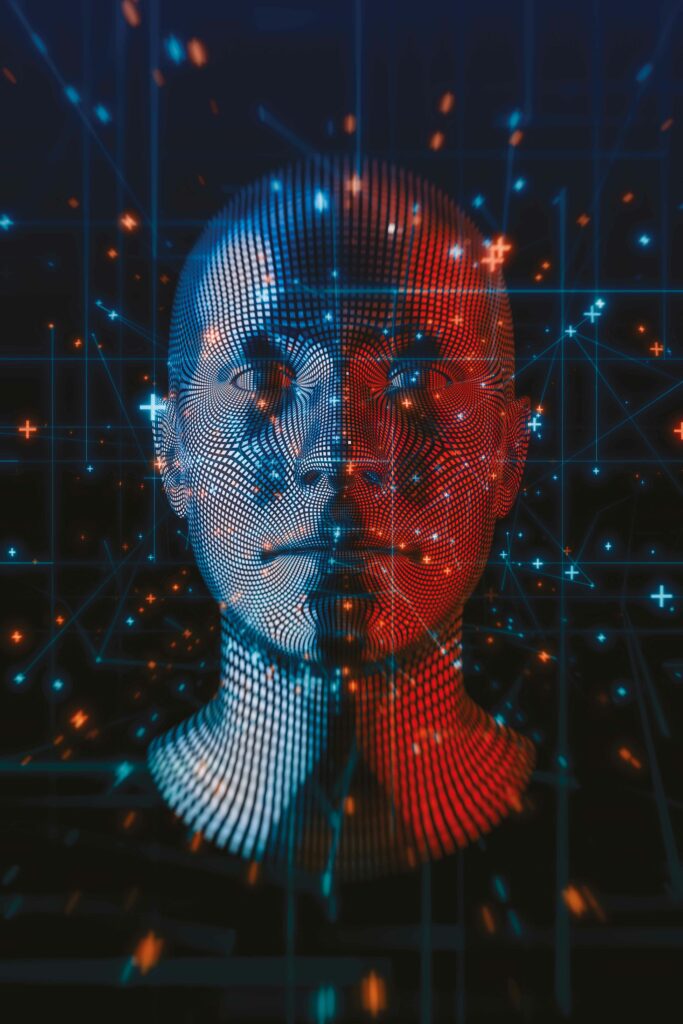Trends
“Quand je définis la société comme l’ensemble des ensembles, vous êtes en droit de me dire que ce n’est pas une définition bien claire…”
Fernand Braudel, inaugural lecture, 1972
Superhuman thinking
For our civilization, the transition from thinking by means of instrumental artifacts to thinking by means of sociotechnical systems is not (and will not be) a quick and easy hermeneutic shift. Our cultural tradition (starting with modern Western tradition) is undoubtedly more familiar with a solipsistic ontology made up of self-contained things, objects, and instruments. And furthermore, of mechanics, mechanisms, and machines within a process that continuously and invisiblyreifies reality. However, this makes it difficult to thoroughly interpret the digital world currently under construction and its sociotechnical complexities. Complexities made up of interactions, patterns, connections, arrangements, overlaps, layers, percolations, redundancies, emergencies, interferences, and disruptions.
Today, we inhabit planet Earth and we experience the world increasingly by virtue of sociotechnical assemblages populated by humans and non-humans, nodes and networks, ecologies and technologies, materiality and digitality, physical properties and social functions, tangible goods and intangible resources, senses and sensors, biological intelligence and artificial knowledge, servers and services, states and stacks.
Hence the emerging cultural effort to (re)imagine technological evolution as inseparable and indistinguishable from the social dimension. And in turn, the latter two as inseparable and indistinguishable from the techno-ecological question more generally (by virtue of terrestrial sensors and space satellites, software programs and learning algorithms, communication protocols and computer simulations of our planet). The digital, artificial, and synthetic revolution inevitably pushes us toward thinking by means of and with recombining assemblages (a set of sets, as Braudel would say) which are simultaneously conscious and unconscious, centralized and distributed, physical and virtual.

Human and more-than-human. In fact, this is increasingly “superhuman thinking” (Accoto). Starting with the development of artificial intelligence: the latest sociotechnical system here to disrupt globally established epistemic equilibriums as well as the cognitive systems of vision and the visible, speech and discourse, writing and communication (including translation). So how should we view the emergence of a planetary intelligence that is sociotechnically enhanced through artificial intelligence? Why does the meaning and the manner of observing the world change when a new machine assemblage is doing the seeing? What happens when the terms “written” and “spoken” (and “translated”) move from being an exclusively human prerogative to an algorithmic socio- technicality that is inflationary and impermanent? Why will we need to innovate culturally to make the best of all these intellectual provocations, stemming the tide of critical issues and vulnerabilities?
Superhuman vision
When addressing the issue of so-called “artificial intelli- gence”, unfortunately, many are still confined by old, dated ontologies. There are indeed philosophically ignorant and politically naïve ways of looking at what is today labeled “artificial intelligence”. In turn, these ways either reify (for inert and neutral tools) or, conversely, personify (for sentient, autonomous machines) technicalities, architectures, and engineering automations. However, from a sociotechnical perspective, so-called artificial intelligence is never such in and of itself (a pure instrumental artifact), but always with others (a sociotechnical assemblage) and for others (a sociomorphic construction). It is also λόγος and ἔργον combined: it embodies and implements new knowledge of reality and new divisions of labor. It does so by instantiating and renewing, for example, different sociotechnical sub-systems: from machine vision to automatic writing. Machine vision is, in fact, a sociotechnical assemblage that dynamically dismantles and rearranges agents, roles, functions, materials, ethics, institutions, policies, decisions, meanings, and the purposes of observation.
However, from a sociotechnical perspective, so-called artificial intelligence is never such in and of itself (a pure instrumental artifact), but always with others (a sociotechnical assemblage) and for others (a sociomorphic construction). It is also λόγος and ἔργον combined: it embodies and implements new knowledge of reality and new divisions of labor.
Speaking more generally, it is also a cultural paradigm shift for visuality – for the traditional dimension of the visual. A new horizon of “superhuman” vision is emerging. The image is thus progressively losing its primary, age-old function of representation and is moving toward the non-representational. Digital, virtual, synthetic, and artificial images are no longer “representative” and are instead becoming “operational” (Operational Images, Parikka 2023), with a gradual infrastructural transition from machine vision to visual machinery. The new sociotechnologies of the machine gaze are therefore deconstructing ancient meanings of the image and ancient epistemologies of observation. As per Dobson’s historical reconstruction: “Computer vision inserts itself in the scene of observation, taking the place previously occupied by the camera itself. It could thus be understood as an acceleration of the project to displace the human perceptual subject and the seeing eye. What we see when we see the output of computer vision, if this output is even rendered in image form, is an impossible perspective for the human” (Dobson, 2023, p. 5).
On planet Digital Earth, there are no ontologically native and permanent actants, assignments, and liminalities, but rather a dynamic human-machine assemblage that instantiates and reconfigures the very meaning and activity of vision in an artificially intelligent manner on a case-by-case basis. In the new sociotechnical assemblages of vision, the “human component” is redefined and reshaped, emerging different and new at the intersection between new experiences, techniques, practices, and professions. This does not simply extend the manner of seeing, but rather radically changes the meaning of seeing.

T-index
Reach most of the online purchasing power
T-Index ranks countries according to their potential for online sales. It estimates the market share of each country in relation to global e-commerce.
Try it nowSuperhuman writing
The same applies to the realm of synthetic writing. The arrival of large-scale language models deconstructs and reconstructs the sociotechnical system of human-machine communications, but also – and more radically, perhaps – the nature and meaning of writing. Meanwhile, the relationship between language (word to be interpreted) and calculation (operation to be performed) is once again transformed.
Historically, we have sought to sever this relationship by imagining the first as ambiguous and elusive and the second as clear and precise. However, the arrival of large-scale language models is now causing this relationship to break down, because we directly use human words (prompting) as a tool for machine programming. Binder explains this well in Language and the Rise of the Algorithm by examining the history of the relationship between natural language and algorithmic computation: “These new practices move the chains once again: the machine, not the human, transforms the problem definition into an algorithm. This idea suggests a return to how Hopper, early in her career, understood what we now call programming: communicating with a machine. However successful prompting turns out to be as a programming paradigm, the need to control language models raises issues that trouble the rigid distinction of algorithms from communication” (Binder, 2023, p. 221).
To argue, as some have, that LLMs are mere “stochastic parrots” is to fail to understand the epoch-making cultural scale of this transition to the “non-human word”. The fact that these language models do not “understand meaning” (a point to be investigated and not taken as already straight-forwardly resolved) does not mean, for example, that there is no production/circulation of meaning and impact for the human involved in the sociotechnical assemblage. Meaning always circulates in some form through the intelligence (or lack of intelligence) of the human who reads the content, even if they are unaware of being deceived by the process of simulation that is at work.
Indeed, as I mentioned earlier, so-called “artificial intelligence” is not conceivable in and of itself (as a mere technical artifact), but always with others and for others (as a sociotechnical assemblage). Historically, words have been an exclusively human prerogative (a signifier that refers to meaning). However, this scenario now shows signs of giving way, and with it the historical concept of authorship (this kind of writing has no author and no meaning apart from what we ascribe to it as actants in the sociotechnical system). But more than this, the very nature of writing may also be changing. The shift appears to be even more radical, fore-shadowing a sort of text apocalypse (Kirschenbaum, Prepare for the Textpocalypse, The Atlantic, 2023).
“Say someone sets up a system for a program like ChatGPT to query itself repeatedly and automatically publish the output on websites or social media; an endlessly iterating stream of content that does little more than get in everyone’s way, but that also (inevitably) gets absorbed back into the training sets for models publishing their own new content on the internet… We may quickly find ourselves facing a textpocalypse, where machine-written language becomes the norm and human-written prose the exception.”
Here, we venture that writing, once called upon to preserve memory (archive before exchange), will tend to lose its character as a form of permanent human inscription and will instead become an impermanent mechanical execution. An uninterrupted, ever-changing flow of words produced by machines for other machines and for humans. After the operational image, therefore, comes impermanent writing: another cultural provocation of epoch-making scope with risky and surprising implications (including for the eco-system of the translated word).

Photo Credit: Jeremy-Thomas – Unsplash
The cultural innovation we need
Today, we are struggling to respond to these epochal (not episodic) challenges with various strategies intended to be convergent: education, legal regulations, ethical configuration, political leadership. They are all necessary, of course. But also, I fear, not sufficient. Fundamental, but not enough for the arduous mission that imminently awaits us. Because the evolving existential dimension that we have ideologically classified as “artificial intelligence” is, ultimately, a global challenge to meaning. In other words, it evokes and embodies a radical cultural attack on the idea (historically constructed and developing) of the human and human civilization.
Because the evolving existential dimension that we have ideologically classified as “artificial intelligence” is, ultimately, a global challenge to meaning. In other words, it evokes and embodies a radical cultural attack on the idea (historically constructed and developing) of the human and human civilization.
This blow came as quite a surprise to homo sapiens; almost out of nowhere, it etched a new wound – narcissistic, deep, and painful – on our living flesh. With the global deployment of artificial intelligence, we will not only face technical problems (with real vulnerabilities and risks of discrimination, manipulation, deprivation, polarization, alienation, and falsification). Instead, and more drastically, we will face intellectual provocations. Starting with the primary one regarding the nature of humans: who are we? Or rather, who are we becoming? This is then articulated in many other questions of meaning and purpose: can impermanent and authorless machine writing exist, as happens with large-scale language models? Or a realistic photographic image without a referent, as is the case with synthetic images? These are not just problems – they are provocations. And while, over time, we will make attempts to find some kind of engineering solution (digital, legal, institutional, political, and so on) to the technical problems facing us, the response to these intellectual provocations must inevitably be cultural innovation. In other words, the production of new meaning and significance for our new experiences of the world. For this reason, the focus is now shifting from systems to socio-technical imaginaries in search of imaginative constructions of new artificially enhanced and socially preferable ensembles des ensembles. To put it poetically, faced with these challenges, we must have the courage to think superhuman thoughts. To go beyond the outdated human that we know and promote new horizons that are more inclusive, more sustainable, more just, more prosperous, and more- than-human. Superhuman, not sovereign.
Photo Credit: Milad Fakurian – Unsplash
Bibliography
Machine translation for everyone
Empowering users in the age of artificial intelligence Edited by Dorothy Kenny
Translation in transition, Human and machine intelligence Isabel Lacruz, Kent State University
The Ethos of Digital Environments. Technology, Literary Theory and Philosophy, Eds. Susanna Lindberg and Hanna-Riikka Roine (2021)
Léa Steinacker (2022), A Sociotechnical Framework to Understand the Implications of Artificially Intelligent Systems from Design to De-ployment
Changing Things, The Future of Objects in a Digital World Johan Redström and Heather Wiltse 2019
Linguistics for the Age of AI, Marjorie McShane and Sergei Nirenburg
Handbook of Human-Machine Systems Edited by Giancarlo Fortino University of Calabria, Italy, David Kaber University of Florida, USA Andreas Nürnberger Otto-von-Guericke-Universität Magdeburg, Germany, David Mendonça MITRE Corporation, USA
The SAGE Handbook of Human–Machine Communication Edited by: Andrea L. Guzman – Northern Illinois University Rhonda McEwen – University of Toronto, Canada
Steve Jones – University of Illinois at Chicago, USA

Cosimo Accoto
Research Affiliate & Fellow @ MIT | Author "Il mondo in sintesi" | Business Innovation Advisor | Culture Change & Learning Lead | Tech Philosopher-in-Residence
Tech philosopher, research affiliate & fellow (MIT Boston), adjunct professor (UNIMORE), Accoto has published a significant philosophical trilogy on technology: Il mondo in sintesi, Il mondo ex machina, Il mondo dato. The Latent Planet is his latest work. He has also published in Economia & Management (SDA Bocconi), Harvard Business Review Italy, Aspenia, MIT Sloan Management Review Italy, Civiltà delle Macchine. He is a frequent speaker, contributor and discussant (Ambrosetti, Aspen Institute Italy, Harvard Business Review Italy, Fondazione Leonardo).
